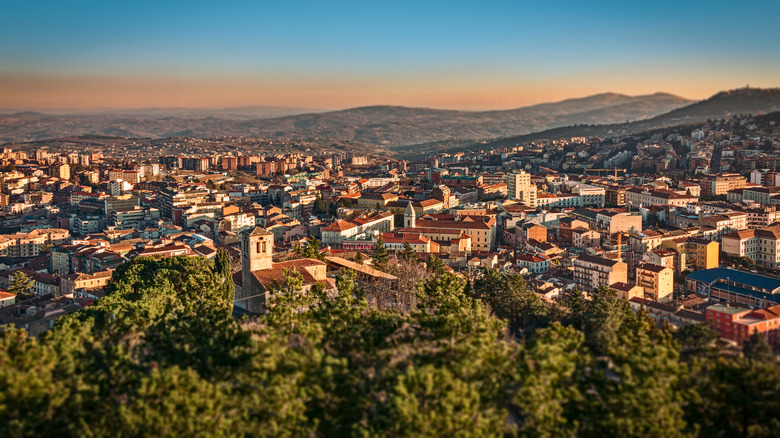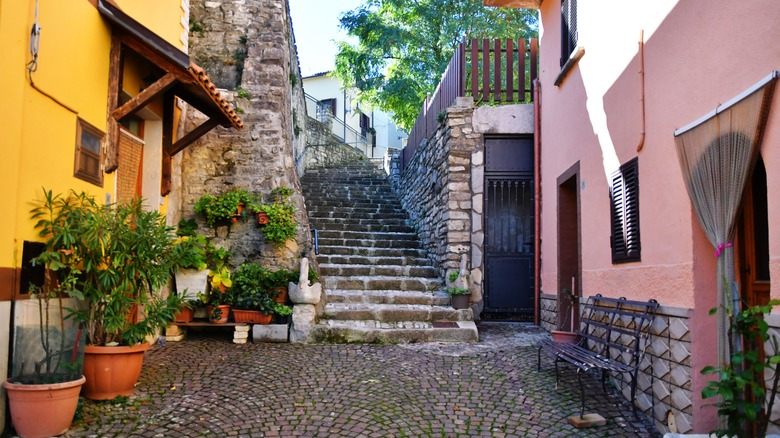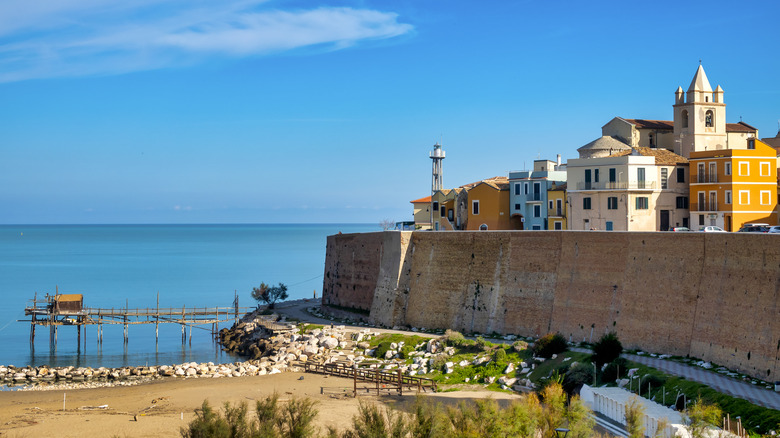Italy's 'Forgotten Region' Is An Unspoiled Coastal Gem Full Of Beaches, Food, And Villages
Italy is indeed a beautiful country. From its islands that don't get enough attention to the epic hikes on the active volcano of Mt. Etna, it's a diverse and dynamic combination of land and sea. Although visitors can traverse the Dolomites in the north or maneuver through popular stops along the Amalfi Coast, many first time visitors use Rome as a home base, which is a solid plan. However, once you've followed all the rules at the Trevi Fountain and stood where gladiators battled at the Colosseum, you might be looking for a smaller, more local vibe. Fortunately, there's an alternative nearby that's off the radar for most tourists. It's called Molise, and it's the second smallest region in the country.
A 3.5-hour drive from Rome or 2.5-hour commute from Naples, Molise sits east of both locations, stretching from the expansive Apennine Mountains and the National Park of Abruzzo along the inland border to the coastal town of Termoli on the east. It's a region barely mentioned in the guide books, yet it overflows with natural beauty, history, iconic Italian food, and quaint villages. Since the entire region is a bit off the beaten path, there's joy in seeking out the wonders less discovered by the masses.
As one example, just outside the small village of Sepino lies a Roman archeological site you're unlikely to find on a Top 10 list for the country, yet it features a well-preserved amphitheater and basilica without entrance fees or hours of operation.
Despite old sayings, Molise definitely exists
There's a saying, "Molise non esiste," which translates to, "Molise doesn't exist". Formerly a part of adjacent and more widely recognized Abruzzo, Molise didn't officially break away to become its own region until the 1960's. Therefore, as the youngest region in Italy, it's overlooked by many, both inside and outside the country. This is exactly the reason the many farms and villages remain unspoiled, even though the area mirrors the history, landscape, and culture of the popular neighboring Abruzzo region.
While some people claim it's a region void of notable products, the craftsmen would disagree. Look no further than Frosolone and its long-standing history as a knife and scissor-making community to embrace the pride of craftsmanship in Molise. Similarly, you can visit a family business that spans back 26 generations to medieval times in the town of Agnone. Called Pontifical Marinelli Bell Foundry, its artisans are known to make the bronze bells you'll find at the Vatican, using the same techniques passed down for 1,000 years.
The industry is just one aspect of Molise that is frozen in time. Public transportation isn't as developed here as in most of Italy, so a rental car is recommended in order to efficiently traverse the region. Your cell phone may be unreliable and you'll likely find that digital maps aren't accurate anyway. It's the kind of place that forces you to ask for directions and recommendations from the locals — which merely enhances the authentic Italian essence.
The many wonders of Molise
Like much of Italy, medieval architecture is everywhere in Molise. Explore castles, churches, and cathedrals in villages throughout the region. Also take in MAACK (Kalenarte Open-Air Museum of Contemporary Art) and the surrounding village of Casacalenda. Then head into nature by touring majestic skylines and valleys between villages in the same way it's been done for centuries, with hiking trails called tratturi.
Depending on which time of year you're visiting Italy, if hitting the beach is on your agenda, you can do that here, too. Head to the coastal area around the town of Termoli and stop at beaches like Lido Campomarino, with its calm waters and soft sand. You'll find an assortment of beaches here, each with its own characteristics. Explore Santa Monica Beach, Marina di Montenero, the resorty Litorale Nord beach, and Marina di Petacciato.
All that exploration will certainly work up an appetite, so it's a good thing Molise delivers on culinary delights, too. When hunger strikes, you'll find the region's Soppressata in sauces and on sandwiches, and Signora di Conca Casale sausage is produced in the area as well. Then there are cheeses like caciocavallo of Agnone and Treccia di Santa Croce di Magliano. Of course, this Italian region also specializes in pasta, so try some fresh cavatelli or fusilli, which can be served alongside the wide selection of local seafood options. Take in each of these experiences, as its undiscovered presence is exactly what gives it its magic.


